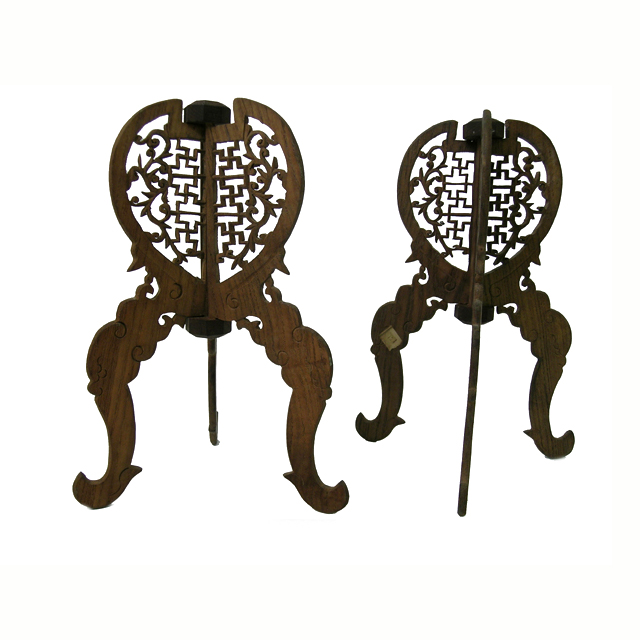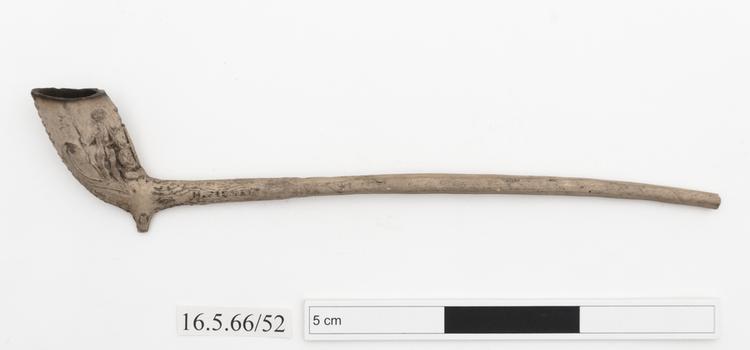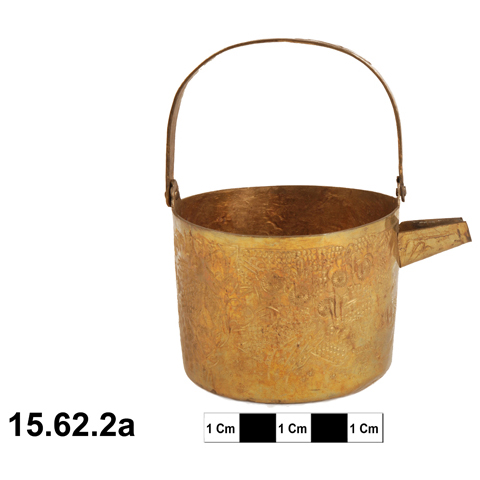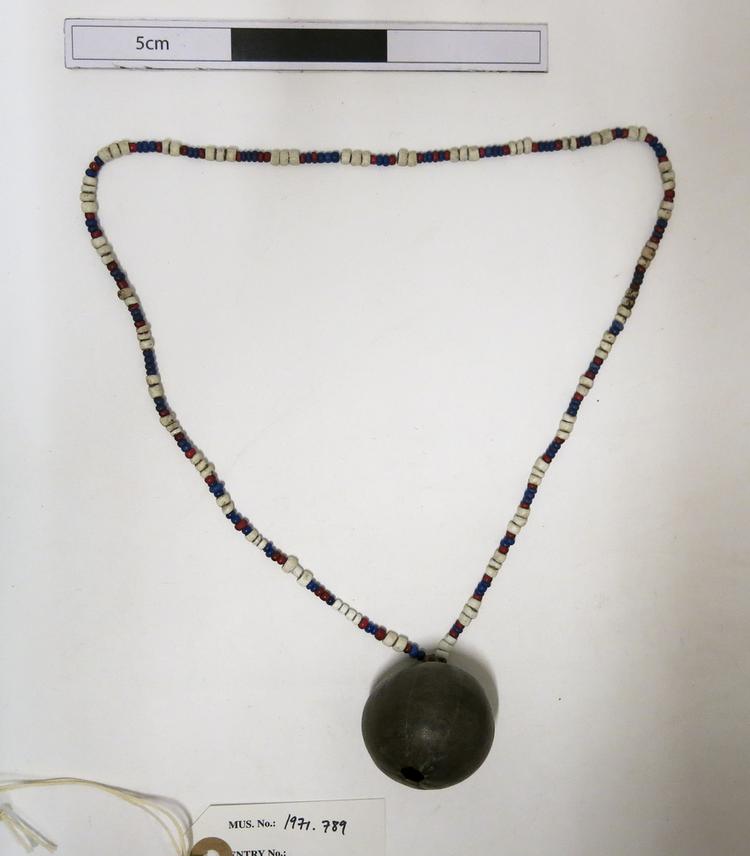
Four collapsible carved wooden hat stands formed from three panels jointed by a wooden hinge. Each panel is shaped in a semi-circle on the upper part with pierced decoration, mainly of scrolls and swatiska, while the large curved legs feature carved curvilinear decoration.
Rev. Robert John Davidson (1864-1942) and his wife Mary Jane Davidson (1847-1918) were Quaker missionaries at the Friends' Foreign Mission Association in Chungking, Szechuan, China from 1890-1894. As well as a missionary, Mary was a trained nurse and midwife and helped the local community. Even though she was not particularly successful in converting the 'poor' women, due to them being "poor in the knowledge of the truth, not in money", she is responsible for the large number of items in the collection which refer to women and children. In 1985 they returned to Britain, where they toured the country lecturing at Quaker meetings about the 'heathen Chinese'. During these lectures they would dress up and act out Chinese life, and even had their 6 year old son Robin display the use of chopsticks. Accompanying their lectures was their collection of Chinese 'curios'. Whilst in Britain they visited The Horniman Museum and spoke with Frederick Horniman, who bought 338 items of their collection for £81.00. They returned to China in 1896 and spent, on and off, around forty years there. See Levell, N., 'The Translation of Objects: R and M Davidson and the Friend's Foreign Mission Association, China, 1890-1894', in Shelton, A., (2001) Collectors, Individuals and Institutions. The Horniman Museum & Gardens. (pp.129-162)






